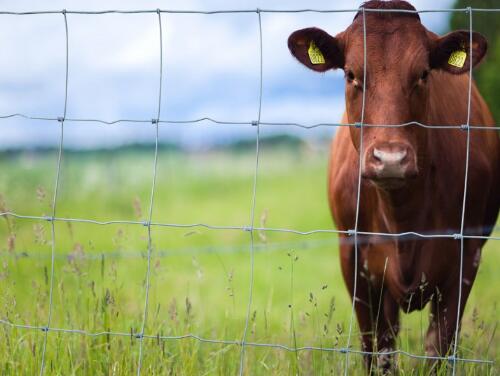Hinge joint fencing is a popular choice for agricultural applications due to its durability, flexibility, and cost-effectiveness. This type of fencing is particularly useful in securing large areas, protecting livestock, and managing land boundaries. It is commonly used by farmers and ranchers for its ability to withstand various environmental conditions and resist damage from animals. In this article, we will explore the benefits of hinge joint fencing and why it is a reliable solution for agricultural needs.

One of the key benefits of hinge joint fencing is its durability. Made from galvanized steel wire, this type of fencing is highly resistant to rust and corrosion, ensuring it lasts for many years, even in harsh outdoor conditions. The strong material also prevents animals from breaking through, making it ideal for livestock management. Hinge joint fencing is designed to absorb impact, which makes it less likely to break or collapse if animals press against it.
The hinge joints between the vertical and horizontal wires allow the fence to flex without breaking, enhancing its strength. This flexibility ensures that the fence remains functional, even if the ground shifts or animals put pressure on it, making it a long-lasting option for agricultural fencing needs.
Hinge joint fencing is well-suited for uneven or sloping terrain, as its flexible design allows it to adapt to changes in the landscape. Unlike rigid fencing types, hinge joint fences can follow the natural contours of the land, ensuring complete coverage and protection. This is particularly useful for farms or ranches located on hilly or rocky land, where traditional fencing may be difficult to install.
The adaptability of hinge joint fencing makes it an excellent choice for large agricultural properties, as it can easily stretch across varied terrain without losing its structural integrity. This flexibility ensures that the fence provides consistent security for livestock and crops, regardless of the ground conditions.
For farmers and landowners, cost is always a major consideration. Hinge joint fencing offers an affordable solution without compromising on quality. The materials used in hinge joint fences are relatively inexpensive compared to other types of agricultural fencing, such as electric or wooden fences. Additionally, its longevity means that farmers will not need to replace it frequently, which saves on maintenance and replacement costs in the long run.
Its ease of installation also reduces labor costs. Since hinge joint fencing is lightweight and easy to work with, farmers can quickly set it up themselves, further lowering the overall cost of fencing their property. This makes it an attractive option for those looking to secure large areas of land with minimal investment.
Hinge joint fencing is an effective barrier for keeping livestock secure and preventing predators from entering the property. The tightly spaced wire mesh ensures that smaller animals cannot slip through, while the strength of the fence prevents larger animals from breaking it down. This makes it ideal for protecting livestock such as sheep, cattle, and horses, as well as safeguarding valuable crops from wildlife.
By using hinge joint fencing, farmers can manage their livestock more efficiently, reducing the risk of animals wandering off or getting injured. The fence also provides a reliable boundary to keep different types of animals separated, helping to maintain order and safety on the farm.
In conclusion, hinge joint fencing offers several advantages for agricultural applications, including durability, flexibility, cost-effectiveness, and protection for livestock and crops. Its ability to withstand tough conditions and adapt to varied terrain makes it a valuable investment for farmers and landowners. If you are interested in learning more about hinge joint fencing, feel free to contact us for more information or connect with a trusted supplier today to find the best fencing solution for your agricultural needs.
Latest Post